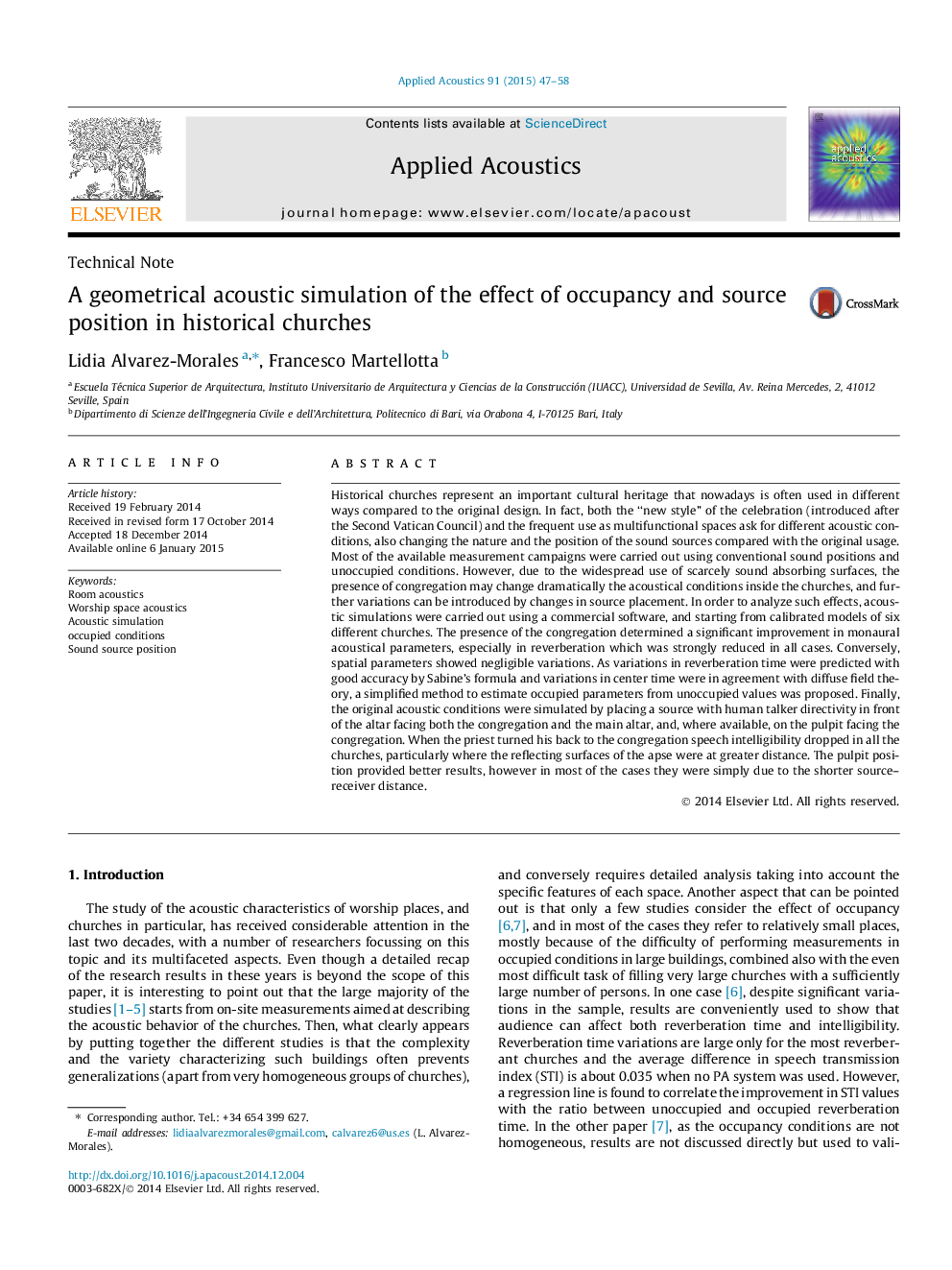| Article ID | Journal | Published Year | Pages | File Type |
|---|---|---|---|---|
| 760896 | Applied Acoustics | 2015 | 12 Pages |
•Study of the influence of the presence of the congregation on the acoustic field of various historical churches.•Acoustic behavior predicted through simulated RIRs, considering different source positions and orientations.•A simplified method to estimate occupied parameters from unoccupied values is proposed.
Historical churches represent an important cultural heritage that nowadays is often used in different ways compared to the original design. In fact, both the “new style” of the celebration (introduced after the Second Vatican Council) and the frequent use as multifunctional spaces ask for different acoustic conditions, also changing the nature and the position of the sound sources compared with the original usage. Most of the available measurement campaigns were carried out using conventional sound positions and unoccupied conditions. However, due to the widespread use of scarcely sound absorbing surfaces, the presence of congregation may change dramatically the acoustical conditions inside the churches, and further variations can be introduced by changes in source placement. In order to analyze such effects, acoustic simulations were carried out using a commercial software, and starting from calibrated models of six different churches. The presence of the congregation determined a significant improvement in monaural acoustical parameters, especially in reverberation which was strongly reduced in all cases. Conversely, spatial parameters showed negligible variations. As variations in reverberation time were predicted with good accuracy by Sabine’s formula and variations in center time were in agreement with diffuse field theory, a simplified method to estimate occupied parameters from unoccupied values was proposed. Finally, the original acoustic conditions were simulated by placing a source with human talker directivity in front of the altar facing both the congregation and the main altar, and, where available, on the pulpit facing the congregation. When the priest turned his back to the congregation speech intelligibility dropped in all the churches, particularly where the reflecting surfaces of the apse were at greater distance. The pulpit position provided better results, however in most of the cases they were simply due to the shorter source–receiver distance.
